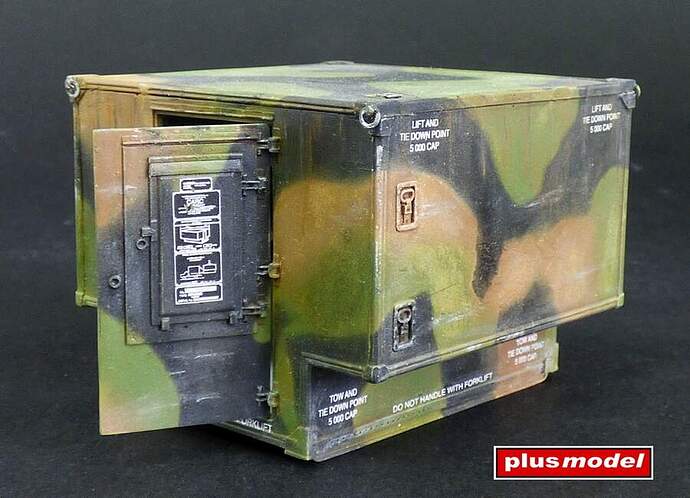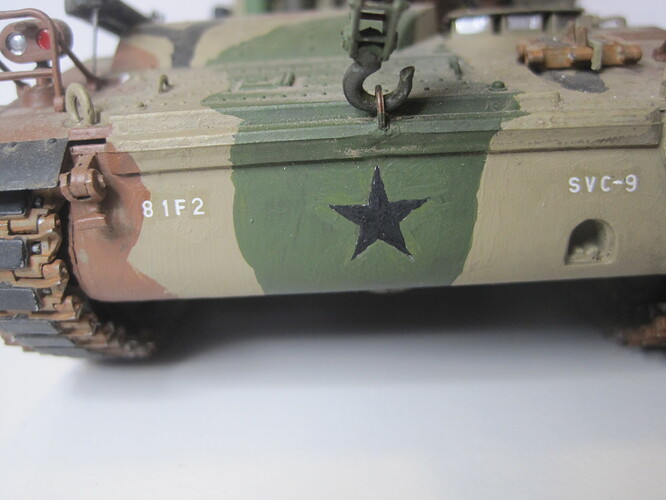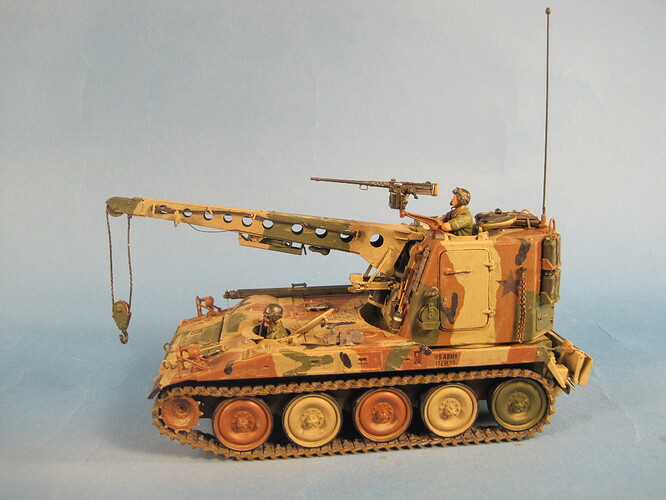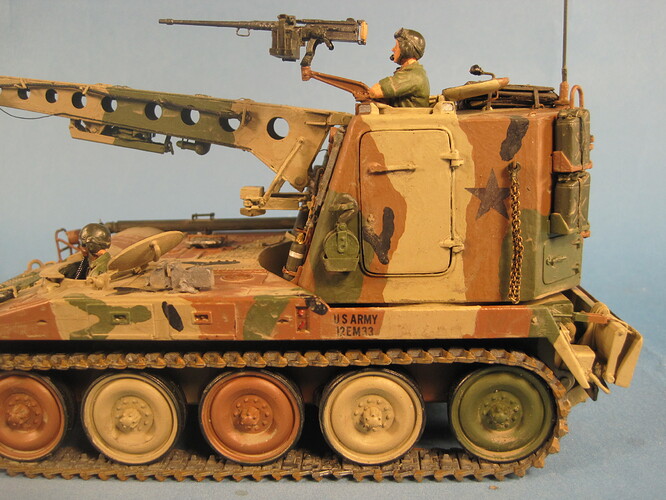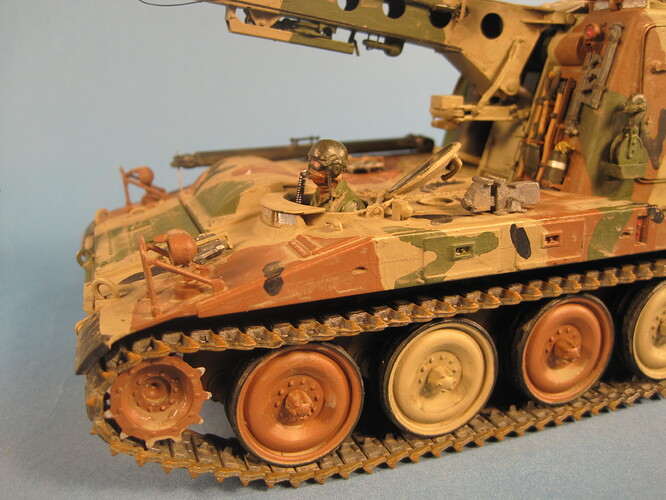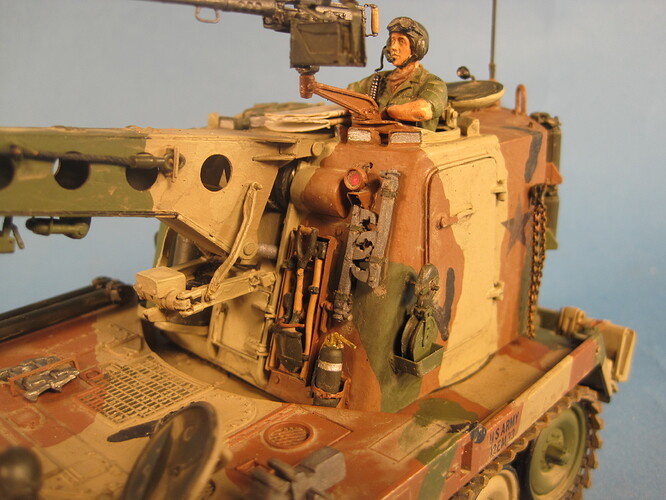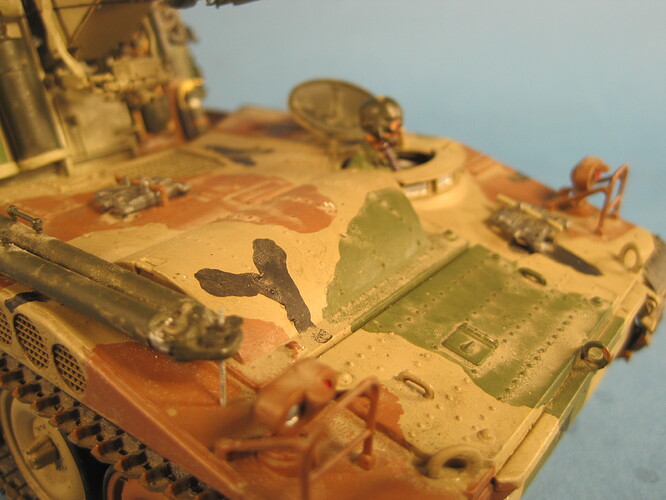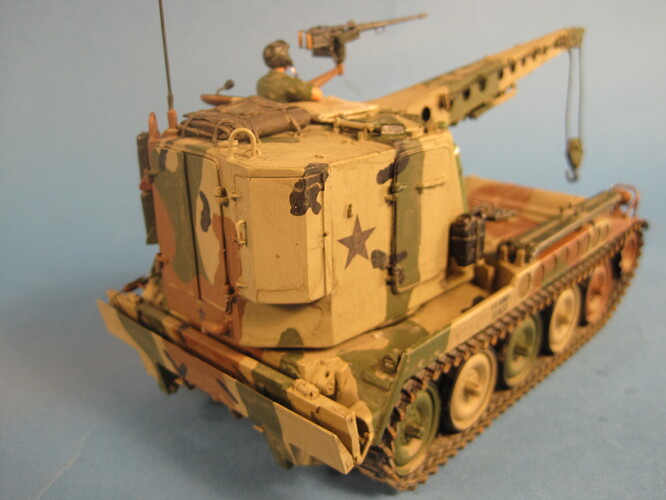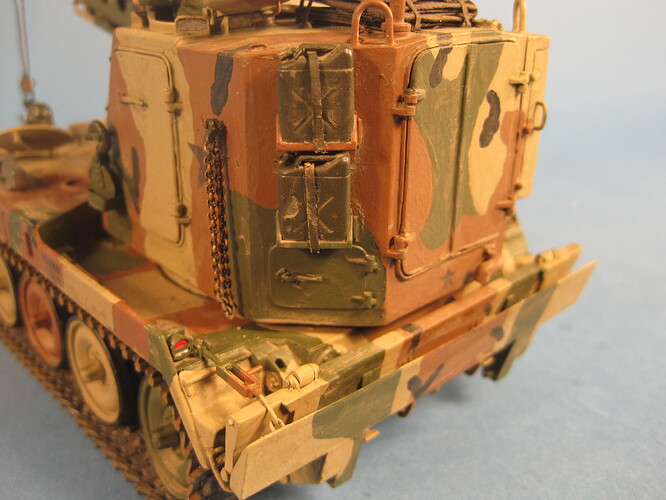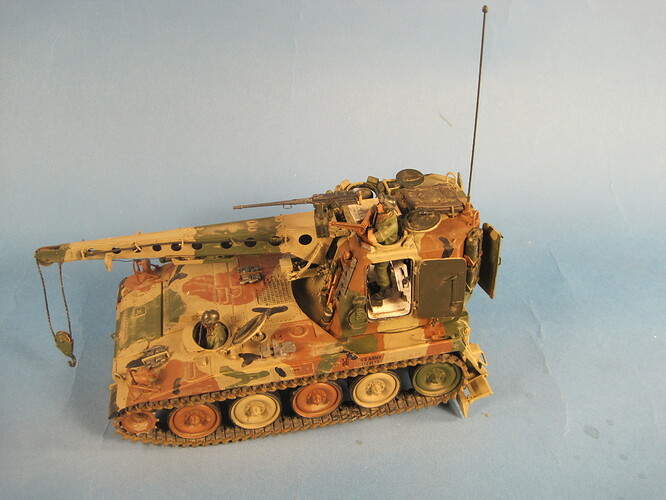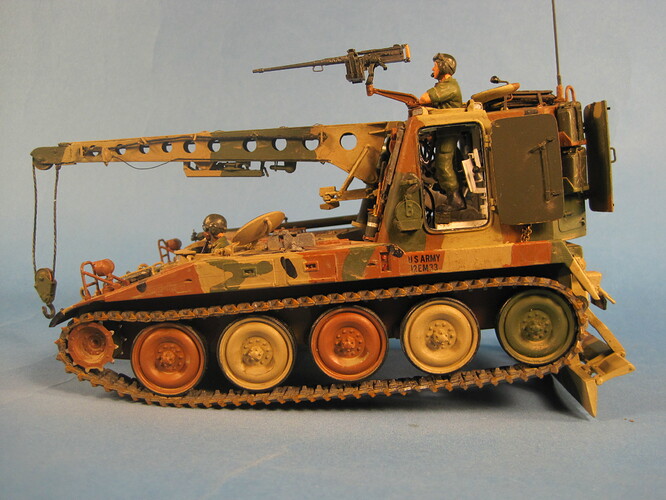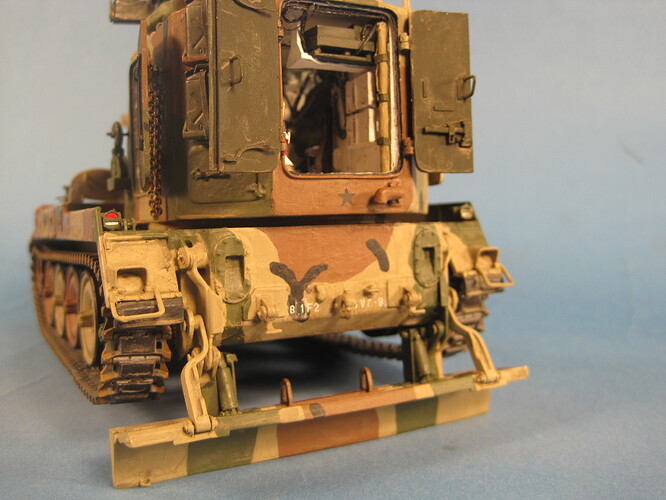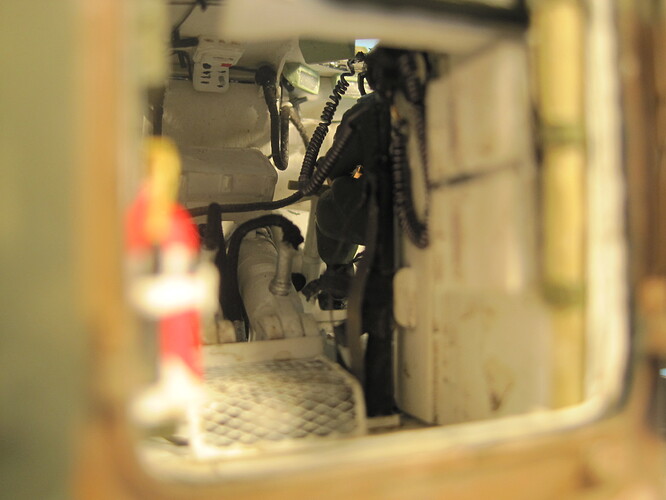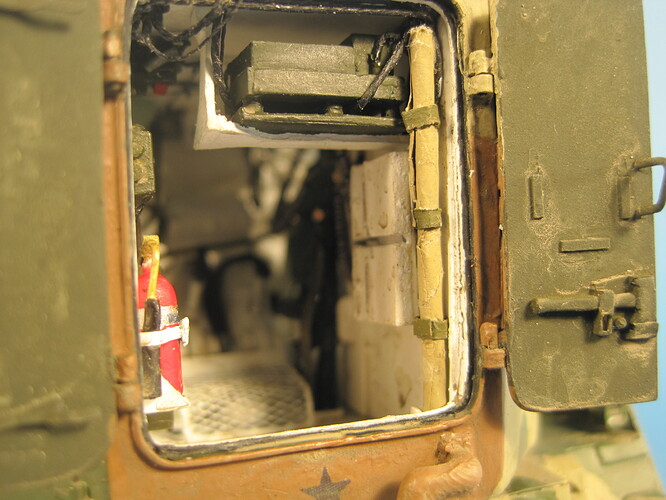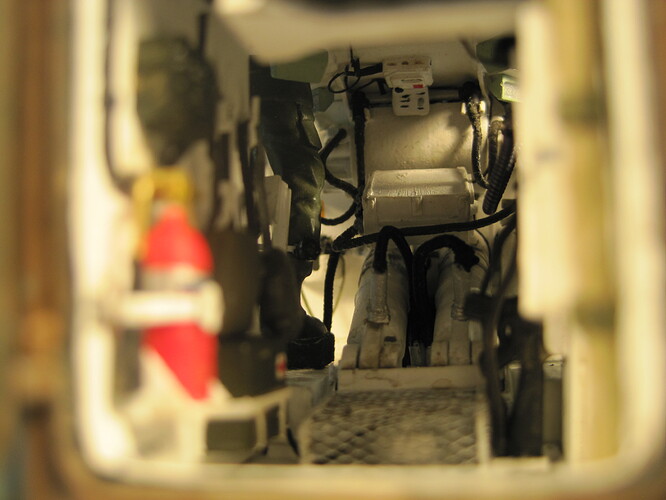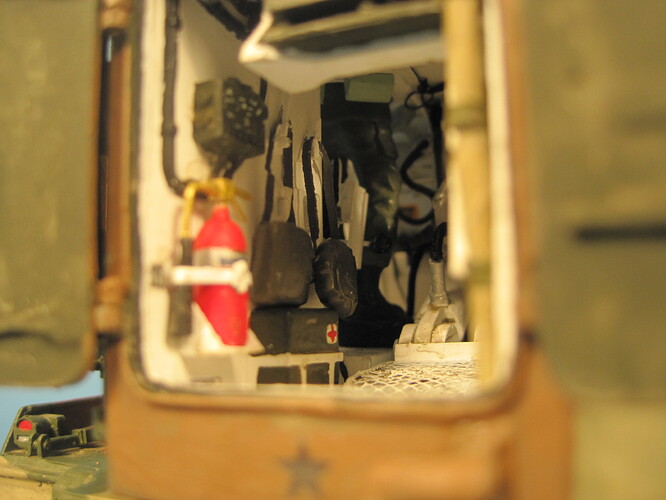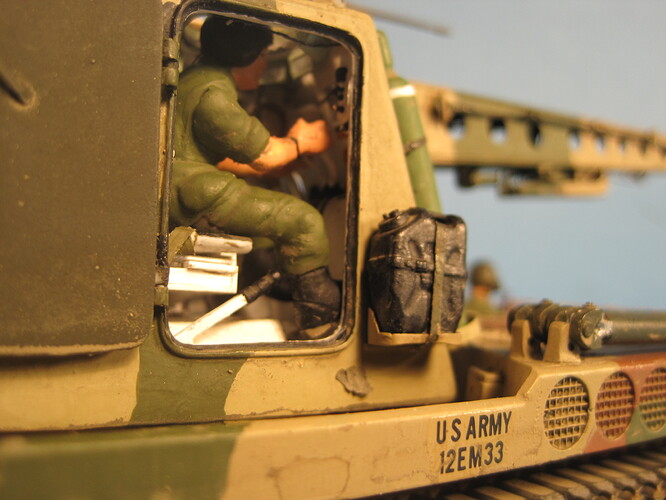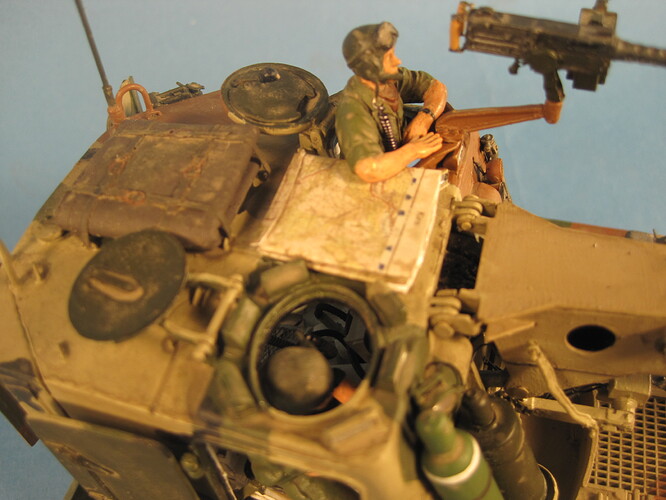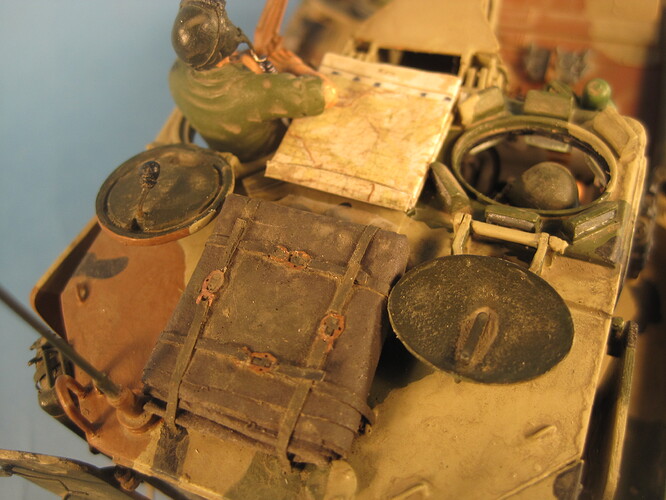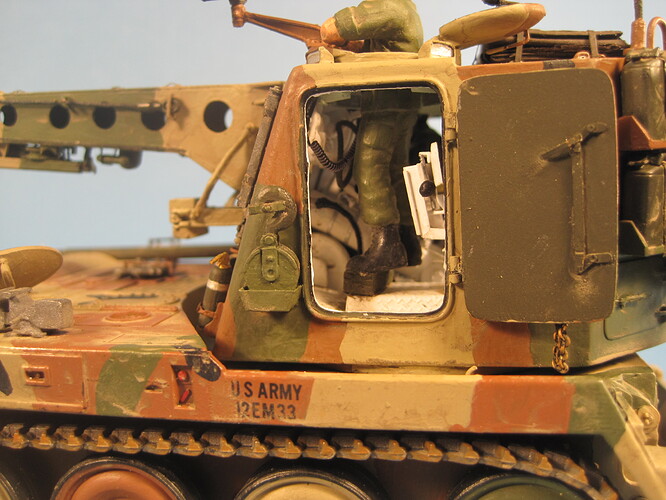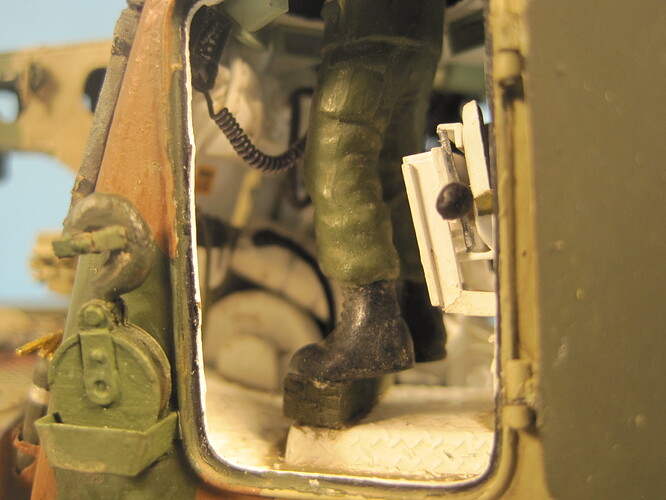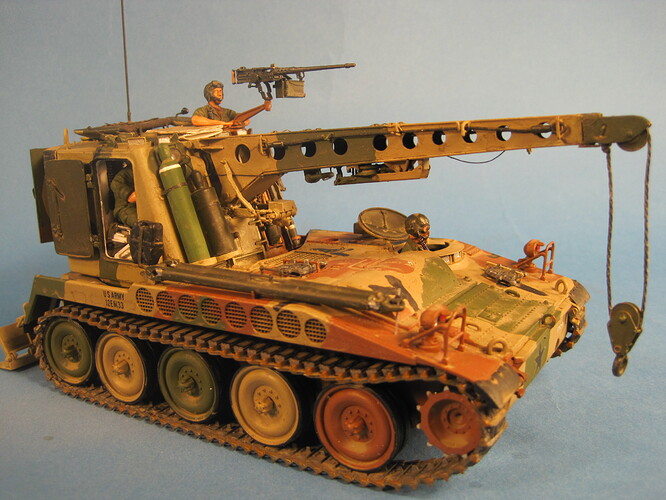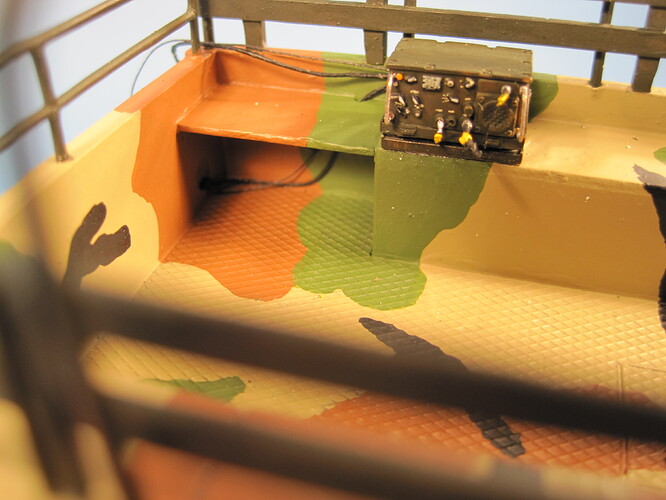I’ve just dug around on their site and discovered this one (presumably the same):
Yeah, I just found it on their site as well. With only a quantity of one available. I’m VERY tempted! Rick do you want to buy it, because if yes, I’ll hold off.
Wow this had been a VERY informative thread about modern US artillery and all its equipment, especially for this 11B lol. Never realized the make up of the units
and equipment used. Excellent really guys!
Rich
We’ve talked a little bit about HHB, but a big part of the support structure the keep the guns firing was provided by Service Battery. As I mentioned previously, for the most part, the vehicles in Service Battery were similar to those in the regular Firing Batteries, less the howitzers of course. But Service Battery DID contain a couple of unique vehicles.
I’ve chosen to pick and choose here and there are a couple of vehicles that I don’t plan on building. One of those is the M88, and the biggest reason is that I’ve already built one. I had already decided to build it as part of another “Series Build” this time for another unit I was in, 4th Bn 20th FA, which was an M110A2 8” unit. So it’s in another scheme, and I don’t plan to build another, so that’s one 1st Bn, 2nd FA vehicle in MASSTER that I won’t be doing.
The other unique Service Battery Vehicle that I’ve chosen not to build, at least at this time is the M816 5 Ton Wrecker. I may change my mind in the future, but for now it’s not on the list. With two other definite vehicles and potentially a third, all three with trailers, I probably just won’t get to it.
So what IS on the list? I have two candidates, one of which is completed, and the other I’m planning on doing when I finish the Battery Maintenance Vehicle.
First, let’s talk a bit about what is actually IN Service Battery, and it’s got even more vehicles than a Firing Battery.
First up would be SVC-1, the BC’s jeep, and just like the other BC’s has a VRC-47 and no trailer. There was one M416 trailer in the Battery, and whether the SVC Commander “borrowed” it or not, I can’t say.
Next came the BATTALION Supply Section, which consisted of the Section HQ vehicle SVC-2 a Gama Goat, which pulled an M101 trailer, SVC-3. The remainder of the Section consisted of two M-54 5 Ton Trucks, each pulling an M105 trailer. Their job was to pick up any supplies being sent down from higher and distribute them as required to the Batteries, and thus the larger capacity, These were SVC-4 and SVC-6, pulling SVC-5 and SVC-7.
Next up was the BATTALION Maintenance Section. This consisted of 6 vehicles. The first was SVC-8 and that was an M151 with just a VRC-46 belonging to the Battalion Maintenance Tech, who was a Warrant Officer, and the “Super Mechanic” of the Battalion. (Note: We ALSO had a Battalion MOTOR Officer, or BMO, assigned to HHB, but he was a CPT, and his job was to ride herd on the much larger number of vehicles in HHB from logistics/supply standpoint).
The rest of the vehicles included the BN Maint vehicle, which was an M35, SVC-12, and like the Battery Maintenance vehicle I’m starting to build, this had a plywood shelter built into a shop. There was also SVC-13, as expected an M105 trailer to haul parts and equipment.
The rest of the section consisted of three different “recovery” vehicles. There was the aforementioned M816 5 Ton Wrecker, SVC-11 which was for Wheel Vehicle Recovery. They had a portable PRC-77 assigned so they could be in communication with the unit, but it was NOT vehicle mounted.
And there was SVC-10, for Heavy Tracked Vehicle Recovery, and that was an M-88 and that was equipped with a single VRC-46.
Which brings us (finally!) to today’s subject, for Light Tracked Vehicle Recovery, SVC-9 an M578. This vehicle was equipped with a VRC-64. All that is, is a vehicle mounted PRC-77 which is NOT meant to be able to operate dismounted from the vehicle. You can see it mounted on the ceiling at the rear of the cab.
When it came to recovery (fancy for towing), a “light” tracked vehicle was considered one of the M577s, and if they were unloaded, the M548s. The M109s were considered the “heavy” tracked vehicles. And of course things like pulling a track’s “power pac” could be done with any of the booms or cranes.
This vehicle started out with the Verlinden conversion kit, but that was a solid resin block and I was never happy with it. When the PSM resin cab came out I took on the project of replacing the old one and detailing the new one. These photos came from the build log I did on the old site as I built it.
So here’s SVC-9.
Nice work on the M578! That is another sharp build.
Another awesome build. The M578 VTR looks great.
I was the evac sgt in my BAS at 1/68 at Wildflecken, we still had the 792 which I can’t recall ever leaving the upper motor pool except for servicing; as the evac sgt, I “owned” (as in I was responsible for supervising the maintenance of) all the vehicles in the medical platoon. Since I can’t speak for the rest of the Army, I can tell you the -46 in ours was actually mounted to the deck between the attendant’s “seat” and the litter rack against the bulkhead. I remember thinking that it was one of the stupidest places to put a radio mount I’d ever seen, but apparently somebody thought it was a good idea at one time.
On another note, I made it down to Baumholder once - for PLDC at the NCO Academy which was located near the family housing area when I was a guest there. One of the instructors was a former platoon sgt from a former unit. Guess who got picked to be student First Sgt, then student Plt. Sgt. before I got to play squad leader? And this guy liked me…I can only imagine what he would have done if he’d hated me…
John, thanks so much for the info!! There is nothing better than actually hearing from someone who has experience with the vehicle!!!
I sort of figured that’s where it had to be. So taking a look at the Gama Goat I did for our XO vehicle, was your radio location on the floor and just to the left of where it is in the XO’s vehicle, back in that little cubby, or was it placed against the FORWARD wall of the bed, directly under the seat which wasn’t a part of a standard vehicle, or was it on that forward wall but pushed over to the RH side, still facing to the rear, but tucked into the cubby?
BTW what year were you at the NCO Academy? I have heard that they moved some stuff around at different times. In fact I think that the building which housed Charlie Battery when I was there actually burned down some time after I was there, and so I wonder if we took over the old NCO Academy to house our C Battery, and kicked the NCO Academy out to another location.
At one point it was located right in the middle of our BN area. We were located at the VERY far end of the troop section at the point where the road that ran past the parade/football field and theater #2 and PX, looped around and you couldn’t go any further. On the upper level of the loop was HHB, then Battalion HQ, and then the Post Education Center. (And there was actually a little cul de sac which went bact to our Commo Compound.)
When you went around the loop and down the hill slightly the NCO Academy was on that level. Bravo Battery, where I started was the next building on that loop, just on the other side of the cross street that led up to the Motor Pool loop and down to our Battalion Mess Hall and continued on down to the Rod and Bottle, I mean Rod and Gun club.
They were at the end of their service when I got to Germany in '83. Having the radio in the back is really awkward.
Nice job.
Yeah, this is a classic case of Army Vehicle Development. After 30 years of Vehicle Engineering Product Development at Ford Truck, I spent about 7 years doing consulting work at the Army’s Ground Combat Systems Command at TACOM. Compared to the private industry, the Army’s process often makes success very difficult to achieve.
Great ideas, but not such great execution.
There was a “white paper” created in about 1975 which I have a copy of, the subject of which was whether to try to “improve” or replace the Goat. We know how THAT turned out. On of the big complaints was about radios.
You needed them in many of the applications the vehicle was used for. If you’re going to tell a Field Artillery Battery XO, “This is your vehicle, and you have to use it!”, he’s GOT to have a radio.
There’s simply NO place to mount it in the cab, so that means in the back.
Which means that you have to connect the system to the guy in the FRONT, because he has to SEE where he’s going, which is impossible in the back if you’ve got the canvass on.
That means running cables between the two articulated sections, not a very robust concept.
And then the guy in the front actually has to be able to use the radio. You can make the connections, and provide an aux speaker and a microphone, but trying to actually USE it when you’re driving the vehicle and the noise level is in excess of 95db is pretty much impossible. I’m not sure but I suspect that some operators may have wound up using something like a tanker’s CVC helmet to try to help with the problem.
Go Army. Lots of stories like this I’m afraid.
You should hear the story about what it has taken to figure out how, and with what to replace all of the M113 variants in the Heavy Brigades, and how long the process is taking.
Tom,
where did you get the radio sets?
Great thread. Love the MASSTER scheme- always seems like it was more useful in Germany than the MERDC.
Great work!
Bret, thanks so much. The radios are from the old Verlinden set. They were some of the best I’ve ever seen, and I don’t think they’re available anymore. Maybe on eBay, but they’re really good ones.
Funny thing about MASSTER. If you read through the “history”, the actual patterns for the vehicles were created in 1966 and were originally planned to have two greens and a brown along with the black. But when they actually implemented the scheme in 1973, the predominant color was the Sand Color.
I can remember thinking as we were in the motor pool painting the colors on by hand that the Army must have lost its mind having us paint vehicles in a sand color in Germany.
But you know, the minute you went out in the field and the vehicles got covered in mud and dust, the scheme turned out to be VERY effective.
Heh. I keep hoping someone picks up the Verlinden molds and starts reproducing.
The photos I used for an M60 in MASSTER seemed to me that the pattern really blended well with mud. I guess the German Army was onto something. Of course the Army was (and still) obsessed with universality of Camo patterns. I think the units in Poland should just get temp paint in green and brown and be told to figure it out. It can then wash off after a few weeks and trip to thru the wash rack.
Hi, Tom
The mount was right up against the forward bulkhead/wall between the fold down seat the medic was supposed to sit on (made for those mini-medics apparently, too small for most) and the cubby. Having the radio in the back had to have been a serious PITA, I know the work around was to have a A-driver wear a headset with boom mike vs. the ear muff style hearing protection required for the goat crews. I only saw that thing move between the upper motorpool and the BMO shop for servicing. It didn’t even roll on alerts, I think we probably would have left it for the Russians if it had come down to it (they probably would have loved the POC).
I did PLDC in spring 1986, like I said the academy was over by family housing. Kids used to cut through the academy to get the bus to school. The instructors tagged anybody looking out the windows at the teenage girls as Chester (as in Chester the Molester), and it would cost them push ups. We had one guy who did a whole lot of push ups, it got to the point that they just told him at 08 to assume the position and knock out 40 so we could train without interruption. We tagged him Big Ches, and when we got back to Wildflecken the tag followed him - good guy, he just liked looking at girls way too much.
My, what an intense,complete job of building.It is bringing many memories back fro me, from being in 1.37th Armor,Apr75-Oct 78. My M60 was in MASSTER, but the M60 next to mine in the motor pool remained in the Dark OD. We had M54’s at HHC level, and 2 Deuce and a halfs at our company level.We also transitioned from the 5 tons in early 76 to GOERs,wrecker/cargo/fueler versions.Those got painted MASSTER almost immediately. Yet our M60A2’s started getting MERDC as I was leaving in 78.I also built the hunka hunka burning resin M578,just to have one. And I am currently building one of each type of vehicle that was in the Battalion. I may opt out of doing a shelter backed deuce and a half, or 5 ton.Though your mess hall truck was spot on from my experience! Excellent job on the immersion heaters as well.Will you put an empty ammo box in the cargo 5 tons for the odds and ends they always seemed to carry? Our deuce and a halfs had them.
I suspect that whoever decided on the sand base color knew about the German WWII three color scheme. MASSTER has a strong resemblance with some black areas thrown in. The main difference being that the Wehrmacht had the crews painting their vehicles to best match local conditions, while MASSTER was a pattern specified at Army level.
Thanks for all the great information.
Carl, great idea about the ammo box. I’ve got several in my stash box and they’ll make a good add.
There were hundreds of thousands of American soldiers that served in Germany from the end of WW II all the way through even today. During the peak of the Cold War, there were two complete US Army Corps, each with two divisions, two full Armored Cavalry Regiments, several separate Brigades and tons of support units. And with MASSTER coming up on almost 50 years it’s great to highlight this piece of history.
At this point, I’m going to finish up the remaining composition of Service Battery. Once I get through doing my Battery Maintenance Vehicle and Trailer, my next project will be from Service Battery, and a very important vehicle, as General Patton would attest: The Fuel or POL Section.
The Battalion POL Section consisted of two M-54 5 Ton vehicles, numbered SVC-14 and SVC-16, each one carrying two 600 Gal Fuel Pods, filled with diesel fuel. Each vehicle pulled an M105 trailer that also had a single 600 gal fuel pod, and those trailers were numbered SVC-15 and SVC-17. I don’t recall whether BOTH of these trailers had MOGAS in the pod, but I know that at least one of them did. Keeping a mechanized unit in the field and moving takes a lot of fuel and generally we tried to locate Service Battery where they could support the entire battalion, which was often spread out over several grid squares, each one a square KM.
Like most sections in the battalion with multiple wheeled vehicles, ONE was generally equipped with a winch, and so when I get around to this project, I’m planning on SVC-14 with a winch, and I’ll do the pod in the trailer with MOGAS.
The next section in Service was the largest and also very important to the Field Artillery, the Ammo Platoon.
It consisted of no less than 22 vehicles. SVC-18, was an M151 with a VRC46, which pulled an M416 trailer, SVC-19 and belonged to the Battalion Ammo Officer, a lieutenant, who also served as the Service Battery XO.
In addition to his vehicle there was a Platoon HQ vehicle, an M561 Gama Goat, no radio, SVC-20, which towed an M101 trailer SVC-21.
And then there were NINE M-54 5 Ton Trucks, each one towing an M332 Ammo trailer. The trucks were numbered SVC-22, -24, -26, -28, -30, -32, -34, -36, and -38, and the trailers numbered with the corresponding odd numbers from -23 through -39.
The SECTIONS, were numbered #1 through #9, and by TO&E, Sections #1, #4, and #7 consisted of an E-5 Section Chief, in addition to a driver and ammo handler, which was all that were in the remaining sections. The platoon usually operated in groups of three sections, each under the direction of the Section Chief. And the Section Chiefs’ vehicles were each equipped with a winch whereas the remaining two each section were not.
This organization provides a lot of flexibility and often a group of three vehicles would get assigned to support each one of the three letter Batteries. But you’ll note that like the Ammo vehicles in the Firing Batteries, NONE of these vehicles were equipped with radios!
And the last element of Service Battery was much like all the other batteries, the headquarters element, which consisted of 8 vehicles similar to the Firing Batteries.
Specifically there was the BATTERY CP, an M561 Gama Goat, SVC-40 towing an M101 trailer SVC-41 with a switchboard operator and (as if!) the battery clerk, with the Medic attached from HHB riding along.
Then came SVC-42, towing SVC-43, which was the Battery Mess section, again, an M35 with a shelter as a mobile kitchen and the trailer, and M105 hauling additional equipment.
Next was SVC-44, the Battery Maint vehicle towing an M105 trailer, SVC-45 again with the truck having a unit built plywood shelter.
And finally SVC-46, the Battery Supply section which was a standard M35 which towed SVC-47, and like the letter batteries, this was an M149 400 gal water buffalo.
Just like all the other units, just enough vehicles and personnel to get the job done, but just like all the other units at the time, never fully manned to authorized strength.
Very nice work, I like all the little details.
I would really appreciate it, if you could share the document about the camouflage patterns.
